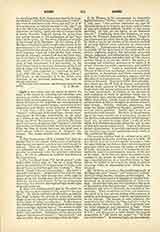

Lobbes, BENEDICTINE Abbey of, Hainault, Belgium, founded about 650, by St. Landelin, a converted brigand, so that the place where his crimes had been committed might benefit by his conversion. As the number of monks increased rapidly the saintly founder, desiring to consecrate his lire to austerities rather than to discharge the duties of abbot, resigned his post. He was succeeded by St. Ursmer, who gave most of his energies to preaching Christianity among the still pagan Belgians. More fortunate than most monasteries, Lobbes preserved its ancient annals, so that its history is known in comparatively minute detail. The “Annales Laubicenses”, printed in Pertz, “Mon. Germ. Hist.: Scriptores”, should be consulted. The fame of St. Ursmer, his successor St. Ermin, and other holy men soon drew numbers of disciples, and Lobbes became the most important monastery of the period in Belgium, the abbatial school rising to special fame under Anson, the sixth abbot. About 864 Hubert, brother-in-law of Lothair II, became abbot, and, by his dissolute life brought the monastery into a state of decadence, both temporal and spiritual, from which it did not recover until the accession of Francon. By him the Abbacy of Lobbes was united to the Bishopric of Liege, which he already held, and this arrangement continued until 960, when the monastery regained its freedom. The reigns of Abbots Folcuin (965-990) and Heriger (990-1007) were marked by rapid advance, the school especially attaining a great reputation.
From this period, although the general observance seems on the whole to have continued good, the fame of the abbey gradually declined until the fifteenth century, when the great monastic revival, originating in the congregation of Bursfeld, brought fresh life into it. In. 1569Lobbea and several other abbeys, the most important being that of St. Vaast or Vedast at Arras, were combined to form the “Benedictine Congregation of Exempt Monasteries of Flanders“, sometimes called the “Congregation of St. Vaast”. In 1793 the last abbot, Vulgise de Vignron, was elected. Thirteen months later both abbot and community were driven from the monastery by French troops and the law of September 2, 1796, decreed their final expulsion. The monks, who numbered forty-three at that date, were received into various monasteries in Germany and elsewhere; and the conventual buildings were subsequently destroyed, with the exception of the farm and certain other portions that have been incorporated in the railway station.
G. ROGER HUDLESTON

